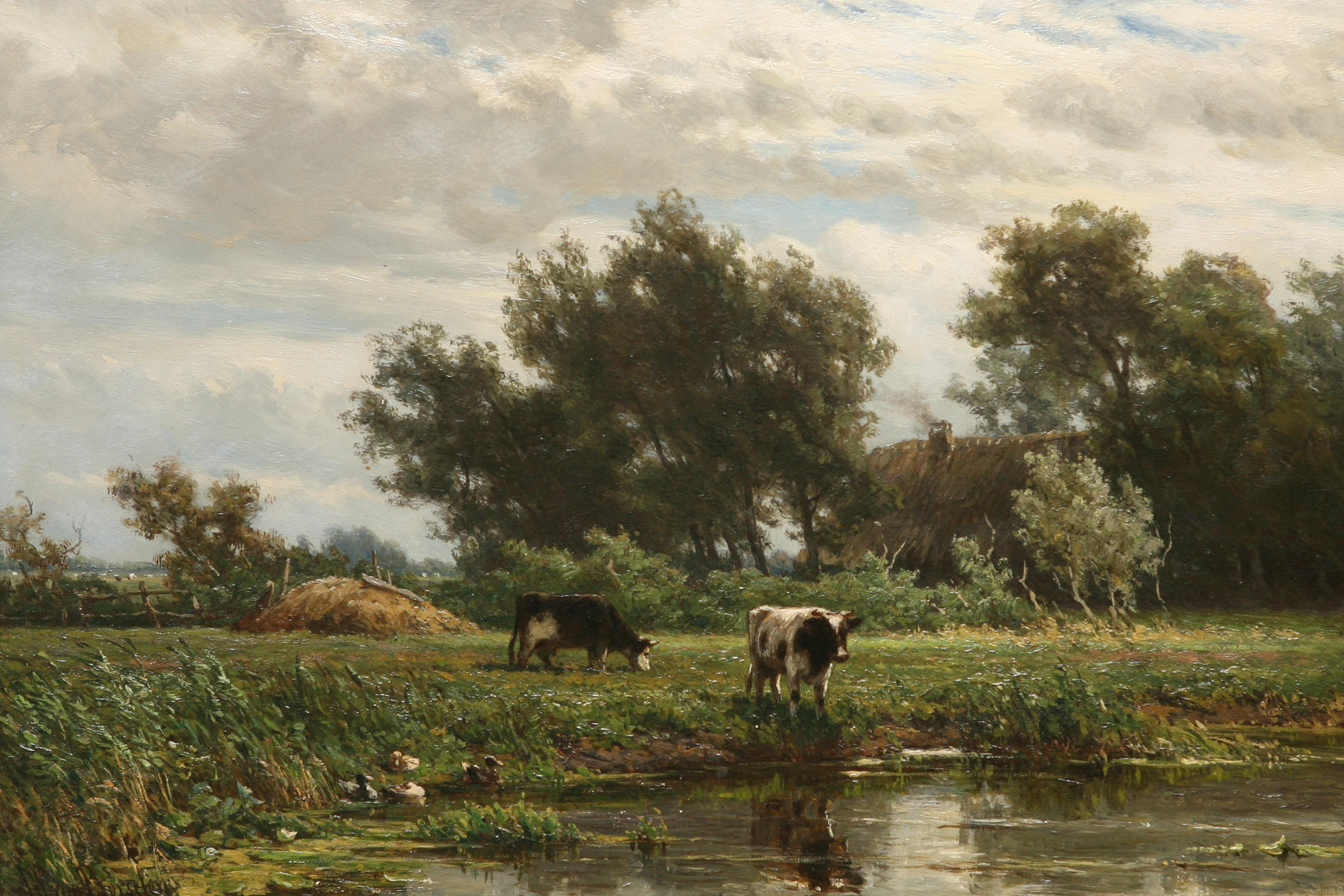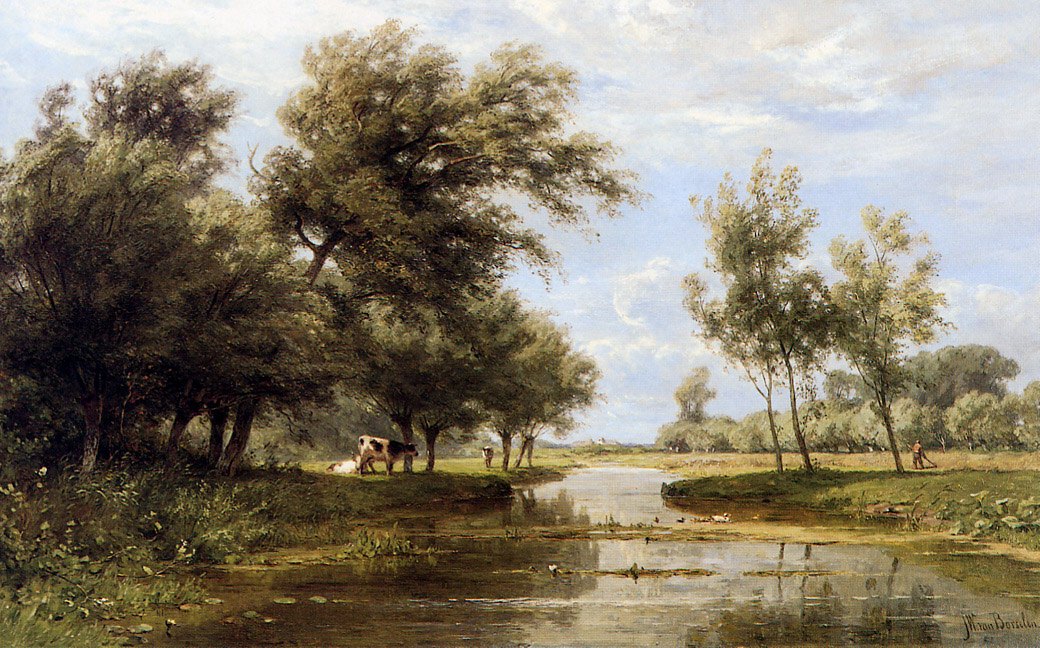Jan Willem van Borselen
Jan Willem van Borselen (* September 20, 1825 in Gouda, † September 24th 1892 in The Hague) was a Dutch painter. He gained notoriety for lifetimes by his landscapes with the elements fluttering reeds, wind moving willow trees and clouds. He is considered the "second flowering " of the Hague School.
Life
He grew up with his parents and two younger sisters on the Gouwe in Gouda. From his father Pieter van Borselen (1802-1873), the painter and teacher was in the style of Dutch romanticism, he was taught painting. His father took from 1831 to 1871 regularly participates in exhibitions. As a 13 -year-old sold JW van Borselen in an exhibition in Groningen his first landscape. From this time until his death he exhibited regularly in exhibitions of contemporary painters in Amsterdam, The Hague and Rotterdam - initially in the tradition of the Dutch romance, later in the style of the Impressionists.
1855 Jan Willem moved to The Hague. On one hand, the landscape, on the other hand also because of the affluent audience. Artists met in the artists' association Pulchri Studio. Purpose of the association were next status policy issues and spending of joint leisure, promotion of the images of the members. JW van Borselen had time of his life at Pulchri held several management functions ( librarian, Second Secretary and Chancellor of the Exchequer )
In The Hague, he went with the painter Andreas Schelfhout in teaching. There he became familiar with the composition of landscape painting in the style of his teacher. Schelfhout as a respected painter later for JW van Borselen put the social contacts of the Dutch Royal House.
From 1857, the commercial and artistic success appreciative turned with the motifs ' willows, clouds and fluttering reed ' a. Together with friends he painted around Gouda and Schoonhoven He produced oil paintings of size 12 x 18 cm, which he developed later in large formats in his studio. In the 70 years he campaigned for the recognition of charcoal and watercolor as its own direction.
In 1872 he became a member of the artist association Société belge of Aquarellistes. This allowed him to take part in exhibitions in Vienna, Paris and Philadelphia. In 1873 he was awarded at the World Exhibition in Vienna a gold medal, in 1876 a medal at the Centennial Exhibition in Philadelphia.
Through contact with his teacher Schelfhout King William III. (1817-1890) received JW van Borselen orders from the royal house. For his work he was awarded by the Dutch Royal House: 1869 Knight of the Order of the Oak Crown and in 1881 an officer in the same order.


.jpg)



.jpg)



